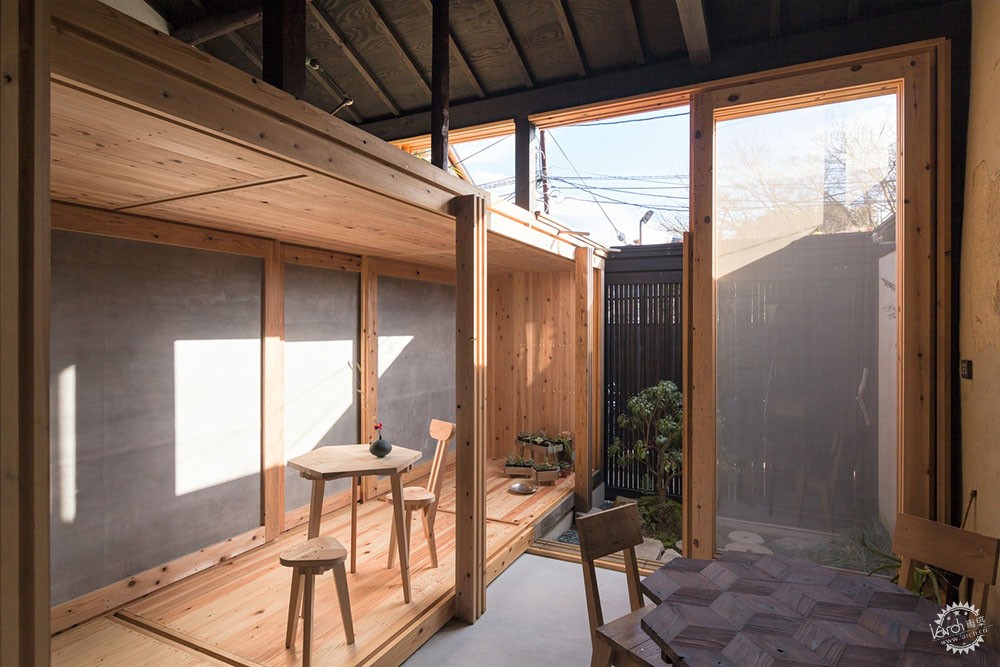
2m26京都住宅
2m26 Kyoto House / 2M26
由专筑网邢子,小R编译
来自建筑事务所的描述:2m26京都住宅由位于日本京都的建筑艺术家工作室2m26负责设计和建造,是一座集住宅、办公、木工工作室和活动空间于一体的建筑。建筑师彻底更新了这座具有百年历史的京都长屋住宅。长屋是一种细长的建筑形式,工匠、店主、工人居住的住所,并通过粘土墙在结构上相互连接,一般通过一个通用的屋顶系统支撑。
Text description provided by the architects. Designed and built by 2m26, an architecture and artist studio based in Kyoto, Japan, “2m26 Kyoto House” is a home, an office, a wood working atelier and an event space. 2m26 entirely renovated a hundred year-old Kyoto nagaya 長屋 house. Nagaya houses were built in elongated rows as living quarters for the common class such as craftsmen, storekeepers, laborers and were structurally connected to each other by clay walls, often supporting a common roof system.
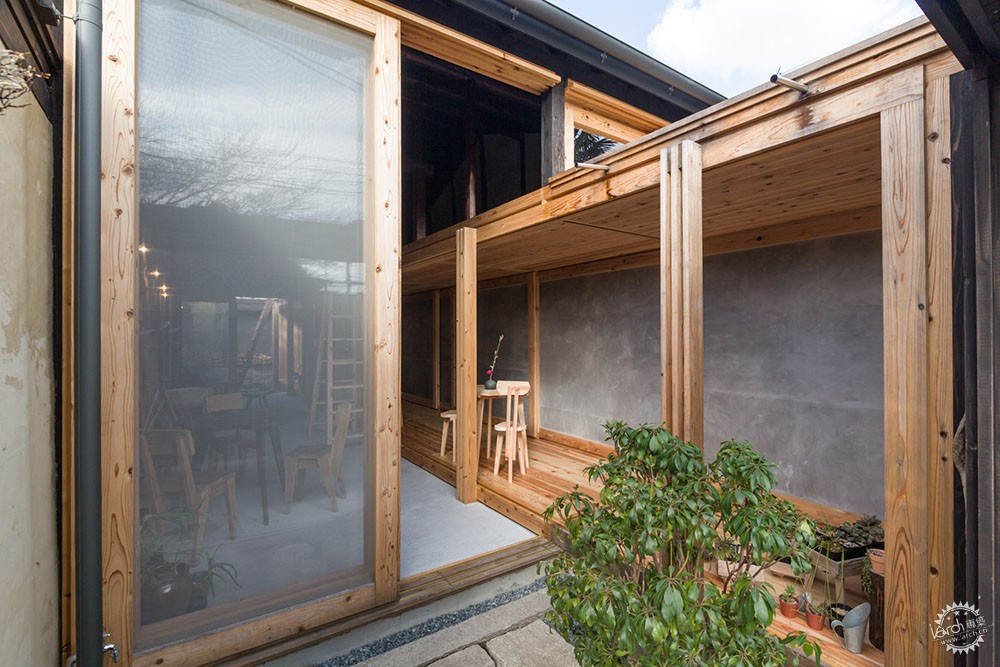
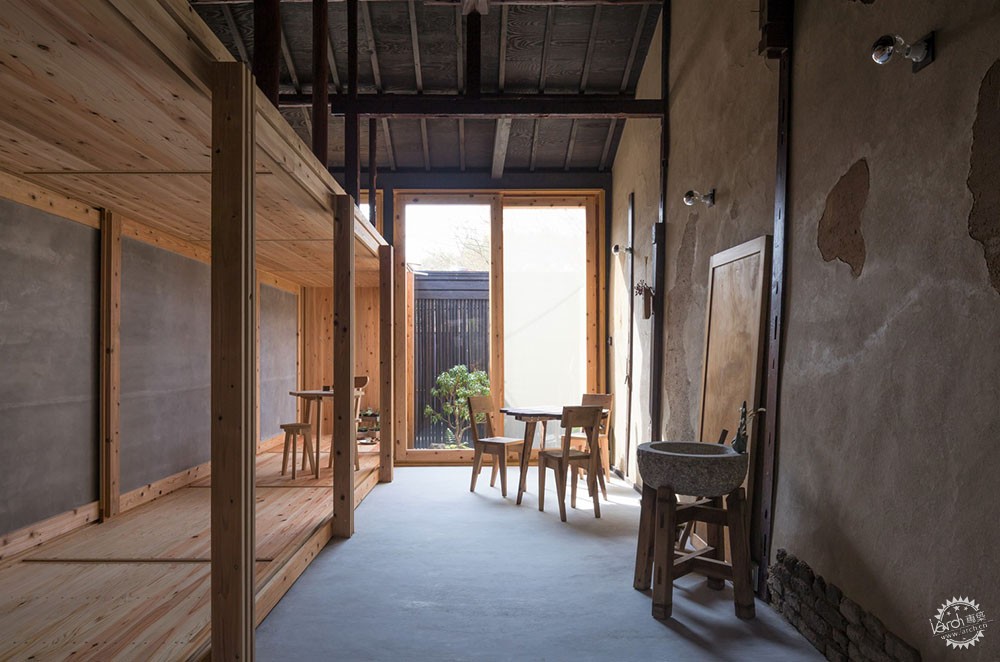
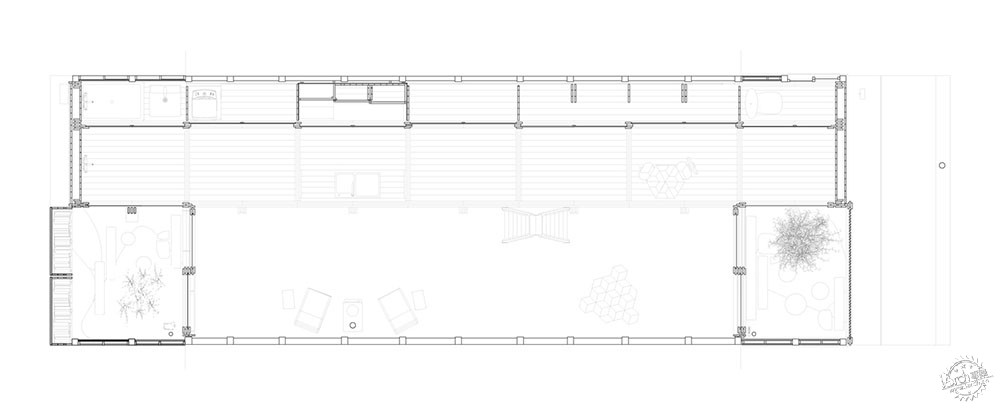
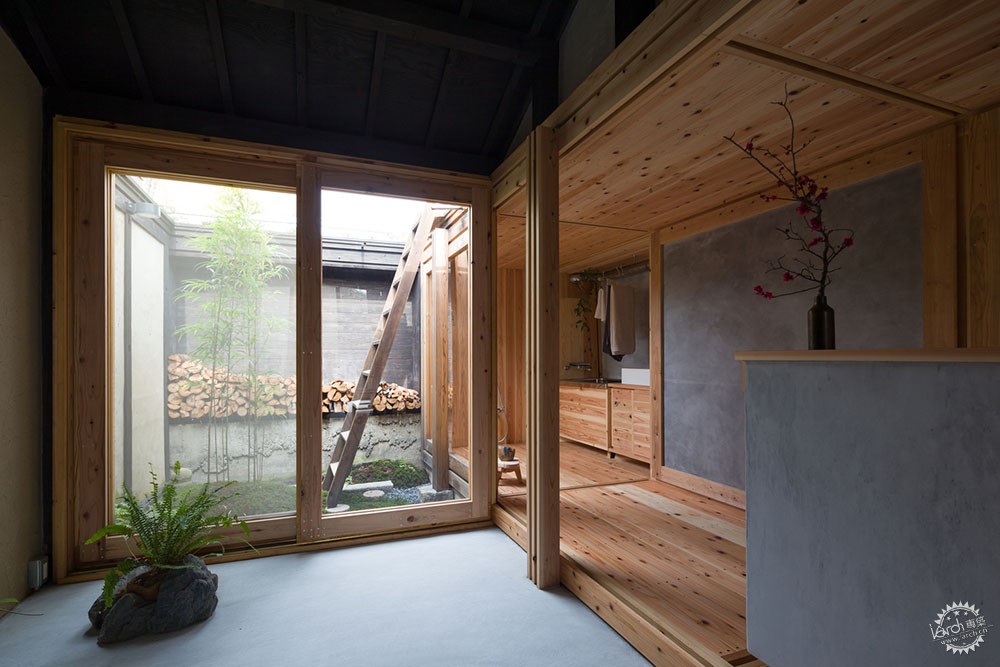
为了保留房屋的灵魂,建筑师十分注意其原始形态、结构和材料使用。在经历时间的洗礼,主墙和屋顶的结构遭到严重破坏,必须进行修复,然后建造新的木制结构以加固房屋的底部,并构成更多的流动和使用空间。
In order to preserve the soul of the house, 2m26 paid great attention to its original typology, structure and use of materials. After a few years left in a state of neglect, the main walls and roof structure were severely damaged and had to be fixed first. A new wooden structure was then built to reinforce the base of the house and offer more possibilities of space and circulation.
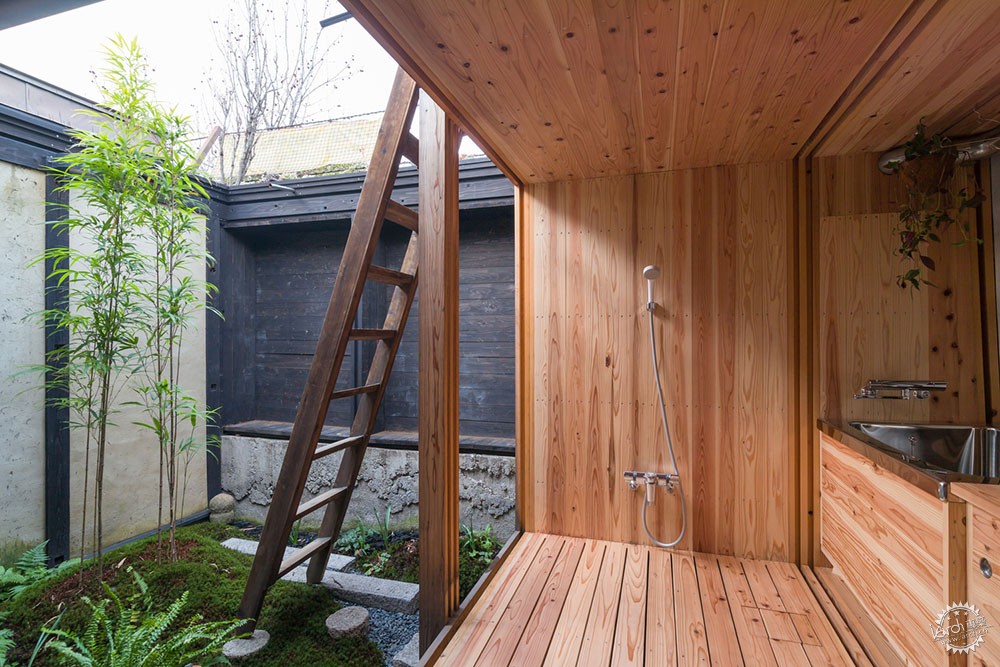
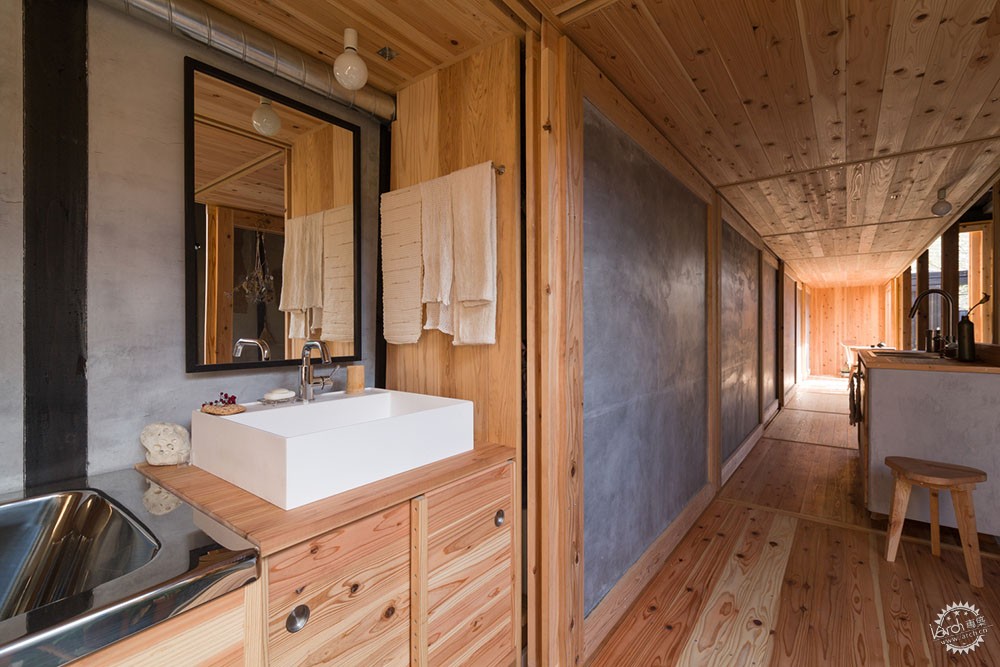
这片占地60平方米的狭窄土地位于安静的住宅区内,周围环绕着公园,由于南北向没有其他建筑,房屋可以向周围开放,并在炎热的夏季中取得良好的通风。这样可以创造出与周围花园直接接触的空间,并可以提升室内空气的流通质量。建筑师利用了这种策略,希望使用者从房屋内部能够看到天空,并感受自然光。
This narrow strip of land of 60 square meters is located within a quiet residential area and surrounded by a local park. The un-built south and north directions of the neighborhood allowed the house to be open to its surroundings and breathe in the hot summer air. This gave the possibility to generate spaces in direct contact with surrounding gardens and for the flow and quality of indoor air to be renewed. 2m26 aimed at taking advantage of this situation, with the desire to see the sky from inside the house and receive direct natural light.
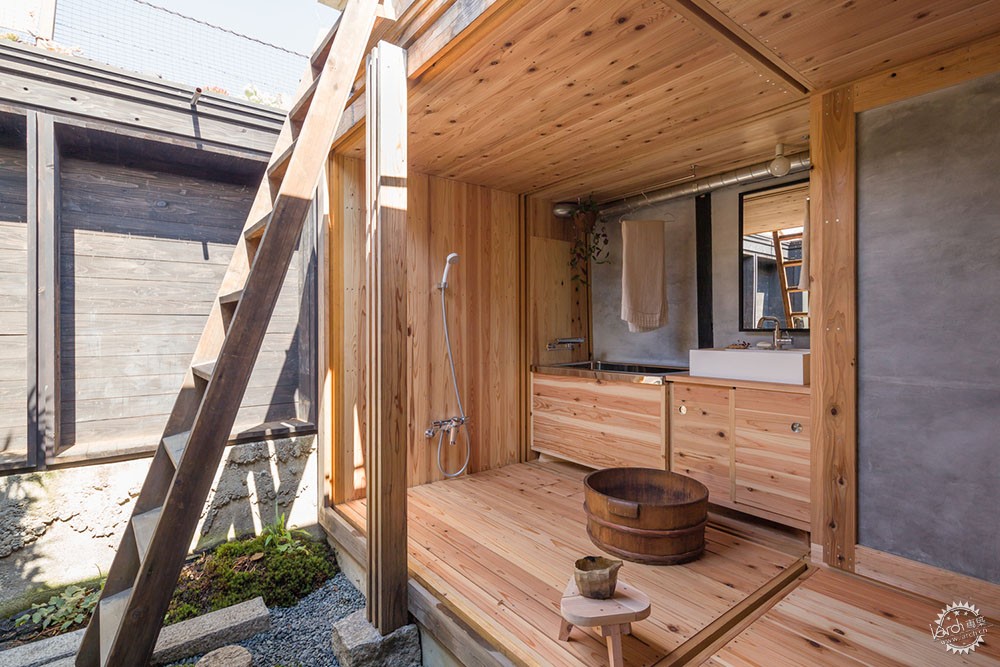
通过这些设计策略,延续日本长屋建筑的传统,建筑师组织了以房屋原始长度为主的两个主要部分的空间重建。房屋从头到尾通高敞开,两侧各有庭院花园,使屋顶的主光束在整个空间中随处可见。这个开放的走廊直接引用了日本的doma土間,保留了燃木炉灶并展现了新的木结构。延伸出房屋原始结构的木结构充分应用了项目场地,并在房屋内外展现了两个截然不同的时代风格。一楼放置设备,另一层则是开放式榻榻米空间,用于卧室和办公,并可通向外部。结构的两个末端空间都面向屋顶露台和小花园。
Following these first points and inspired by traditional japanese nagaya planning, 2m26 organized the reconstruction of the space in two main parts using the original length of the house as a guide. From end to end the house stands open at full height with courtyard gardens on either sides, allowing the main beam complex of the roof to be revealed and visible throughout the entirety of the space. This open hallway is a direct reference to the Japanese doma 土間, including a wood-burning stove and the distribution of the new wooden structure. The new wooden structure built into and extended out of the original structure of the house reaches the limits of the land and provides two stories inside and outside the house. The ground floor gathers all equipment while an additional second floor displays an open tatami space for bedroom and office use with access to the outside. Both extremities of the structure turn to roof terraces and small gardens.
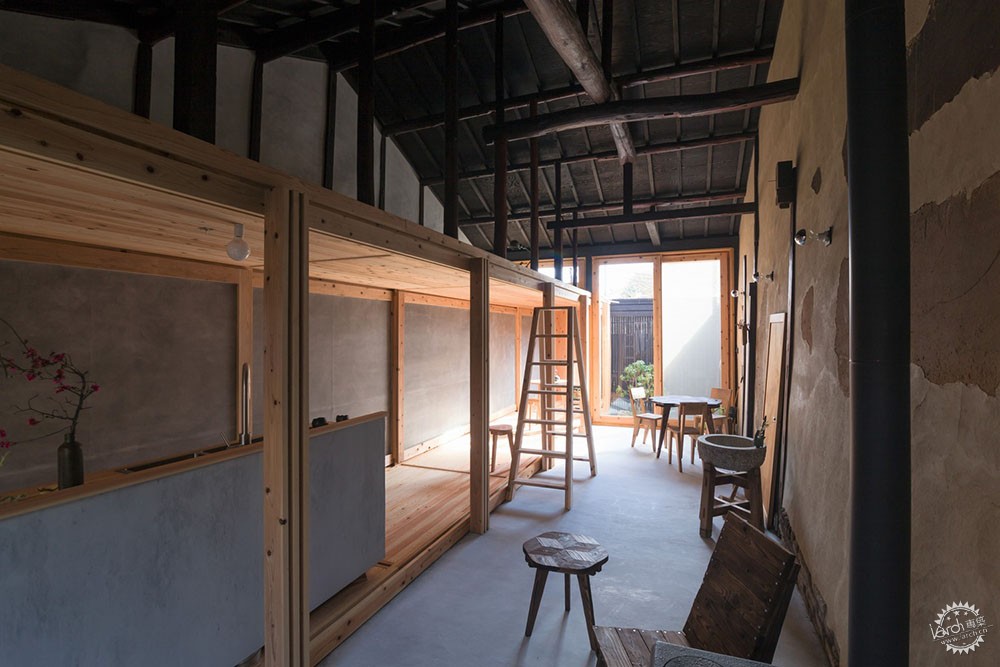
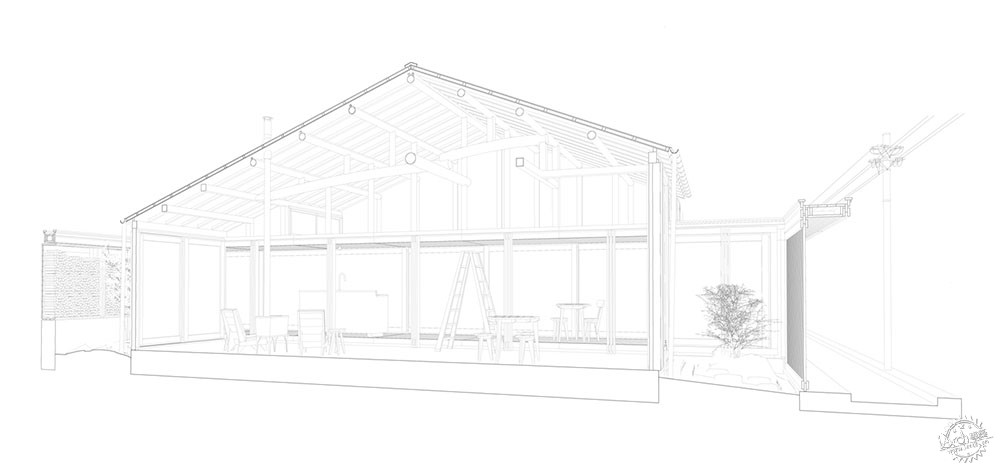
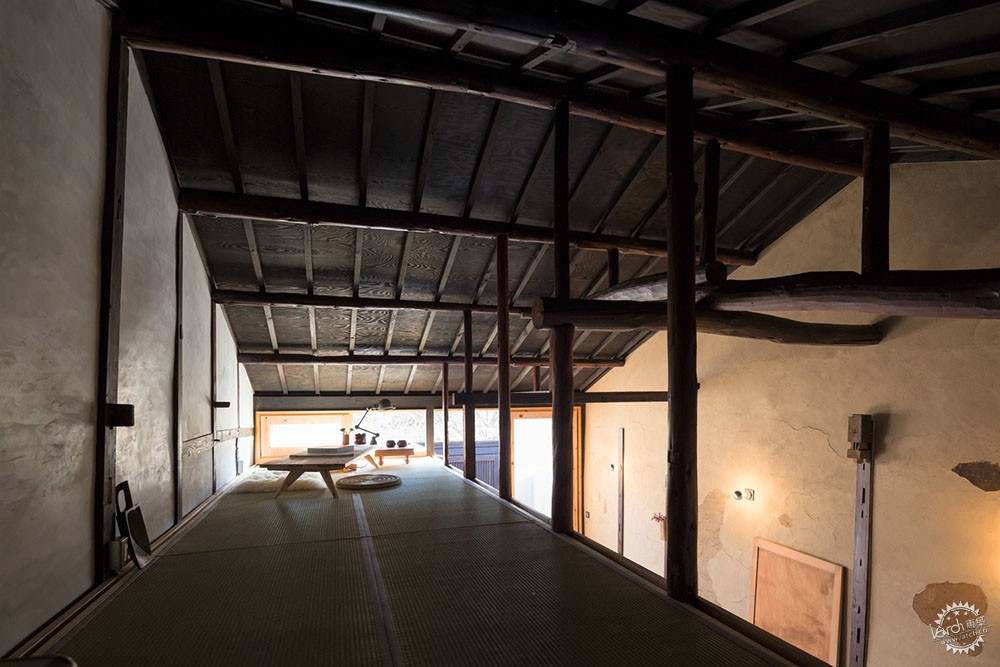
建筑师希望这座房子成为能够举办展览或艺术表演的活动空间,而不是仅用于生活和工作的私人住宅,为了让所有个人物品和设施能在空间中“消失”,建筑师在底层结构的一侧设置了一个较长的空间来做转换,该空间容纳了所有设施,例如卫生间、工作室、厨房、更衣室和浴室。该空间可以通过滑动门关闭和打开,从而产生连续的空间。虽然空间的背景可以根据功能进行改变,但浴室和入口都可以直接通向花园,重新定义了室内的感受。
2m26 wanted this house to be a space able to welcome events, exhibitions or art performances rather than a private home used for only living and working activities. All equipment and personal items should be able to disappear. This intention was translated by creating a long storage space on one side of the structure of the ground floor which would house all facilities such as the toilet, atelier, kitchen, dressing and bathroom. This space could be closed and hidden by sliding doors allowing as a result a continuous space to be generated. Whilst the background of the space is able to transform and change according to its use, both the bathroom and entrance can be fully opened to gardens, giving new perceptions of the interior space.
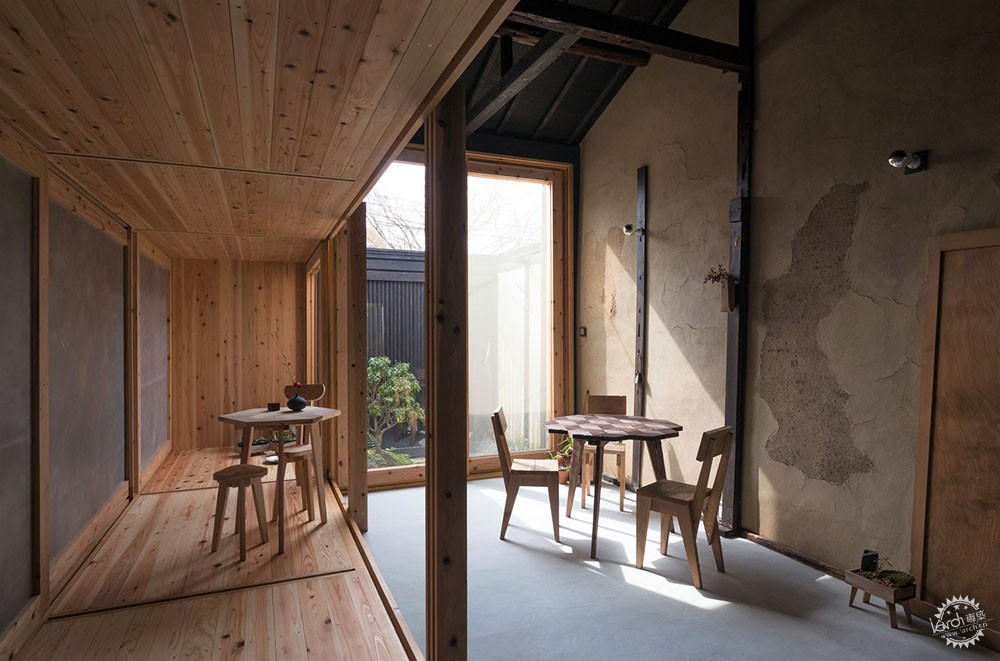
结合当地工匠的丰富建议,建筑师将日本传统技术与创新的建筑方式结合在一起。装修过程极大地影响了建筑原始材料的再利用。损坏的木材在冬季的柴火炉中继续燃烧,以提供热量,旧屋顶和墙壁上的大量粘土被保留,筛分并重新用于固定主墙。新的木结构和家具使用位于京都市中心的一家木材工厂的本地雪松制造,石膏灰泥则运用在设备齐全的隐藏空间滑动门上。位于二楼的量身定制的榻榻米则是由熟练的工匠设计制作。
Richly advised by local craftsmen, 2m26 incorporated the use of traditional Japanese techniques together with their own way of building. The process of renovation greatly influenced the way in which the original materials of the house were to be reused and repurposed. Damaged and no longer usable timber were burnt onsite in the wood-fire stove to provide hot air in the winter and a large amount of clay from the old roof and walls were kept, sieved and reused to fix the main walls. The new timber structure and furniture were built using locally sourced cedar from a wood factory located in the center of Kyoto and plaster lime was coated on the sliding doors of the equipped storage. The perfectly made-to-measure natural base tatamis on the second floor were created by a skilled craftsman, Yokoyama-san, also based in Kyoto.
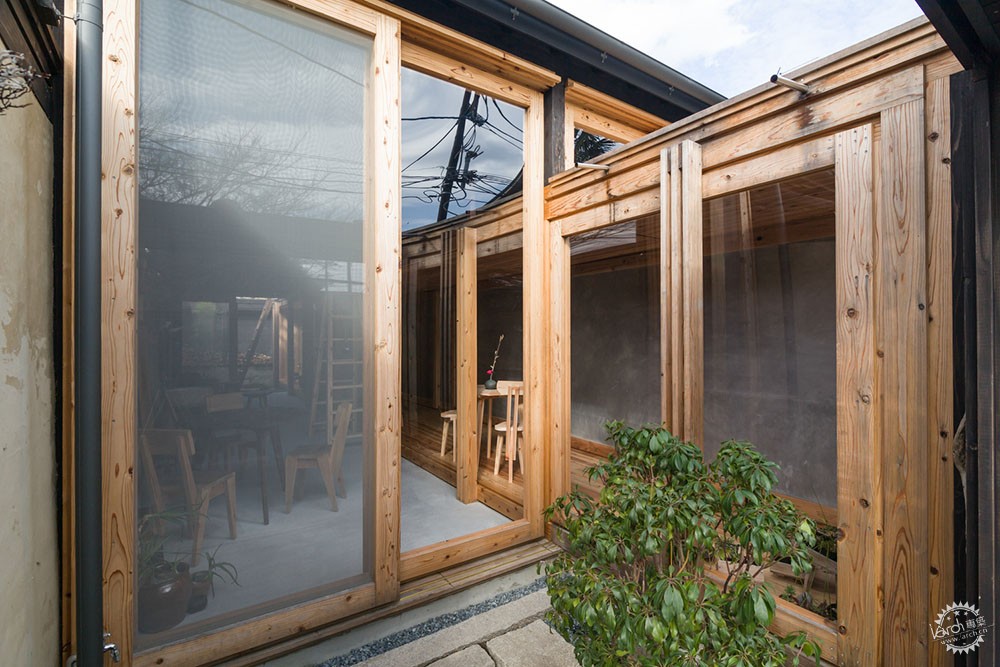
盘坐在榻榻米及木制家具上,行走在雪松木及抛光石材的走廊上,空间表达出了体验的多样性。建筑的入口和末端都有高大的滑动玻璃门,可以让阳光进入其中。天空、自然风光和花园的景色衬托出这座小房子的曼妙姿态。
By sitting on the tatami, wooden furniture, walking on the cedar and dancing on the stone polished hallway ground, the finished space enables multiple impressions and points of views to be expressed and experienced. The tall sliding glass doors at both entrance and end allow the changing sunlight to enter through the passing of each day. The views of sky, surrounding nature and gardens perform as magistral gestures towards this tiny house.
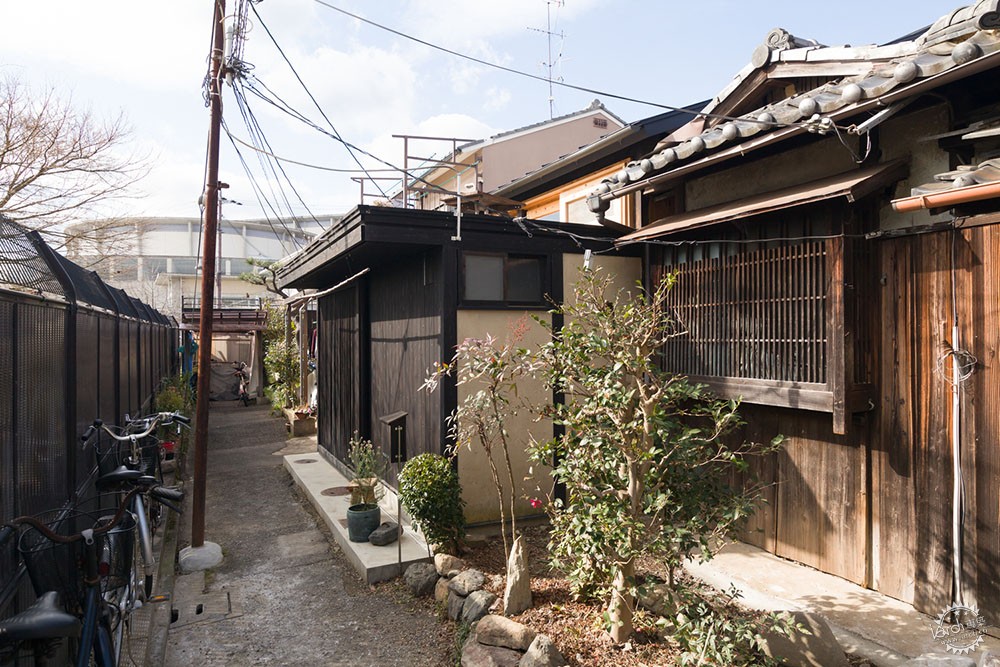
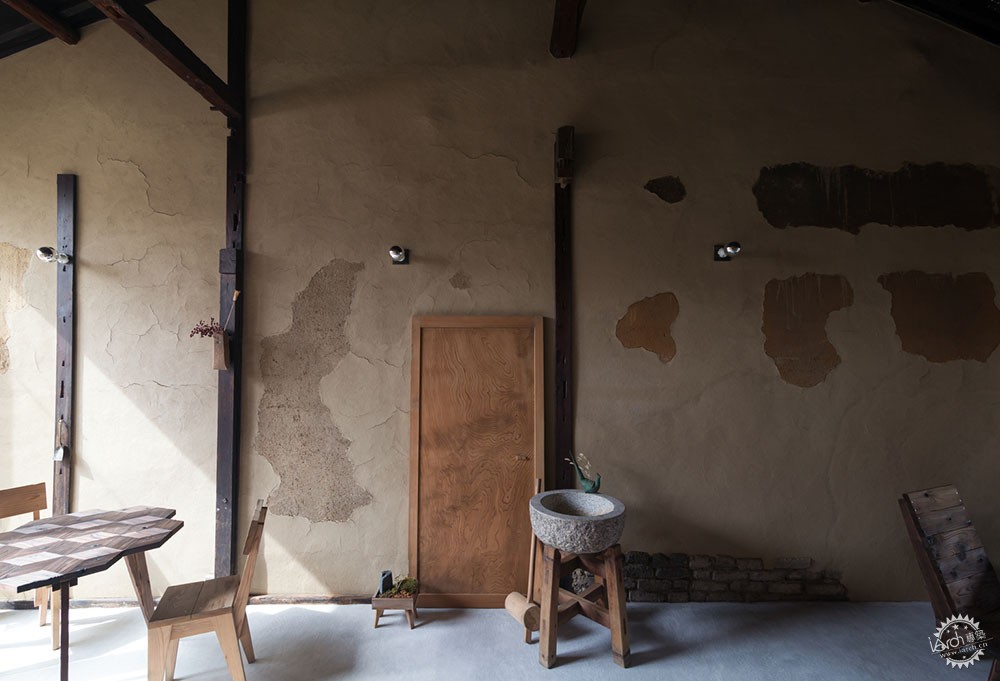
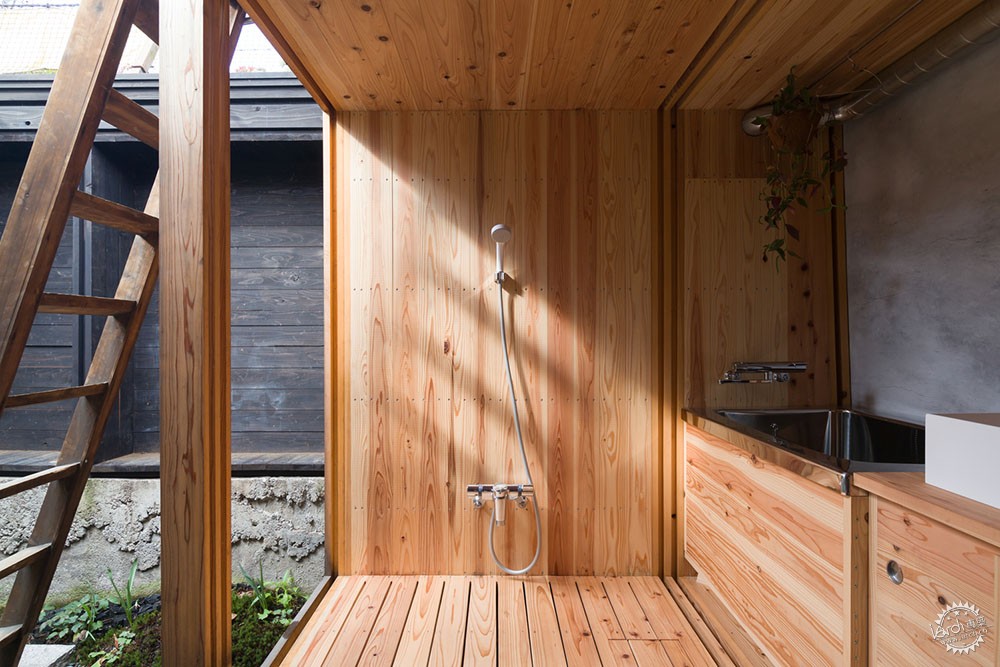
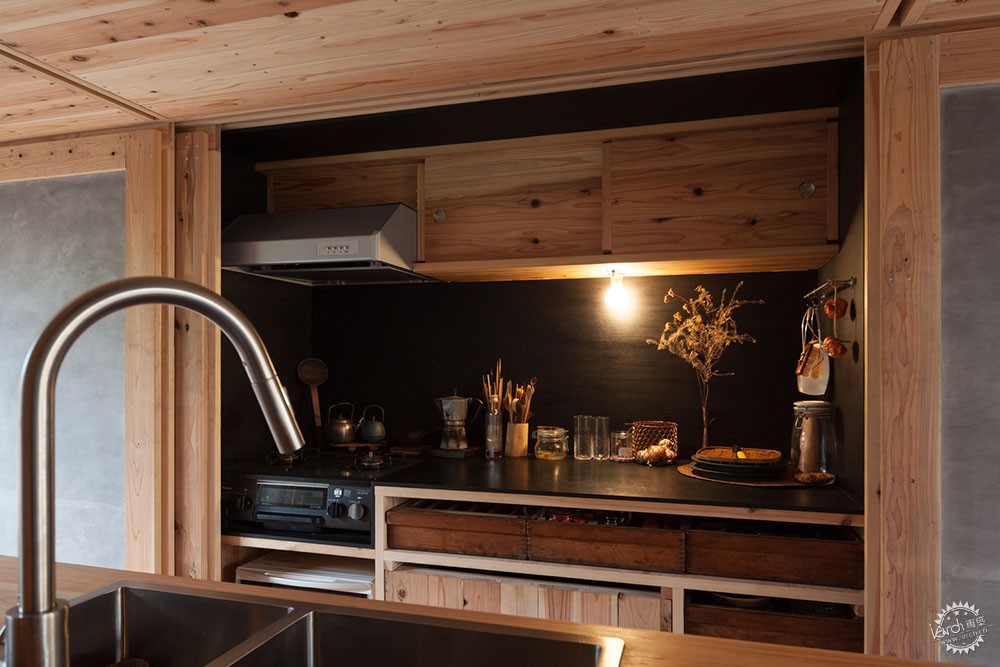
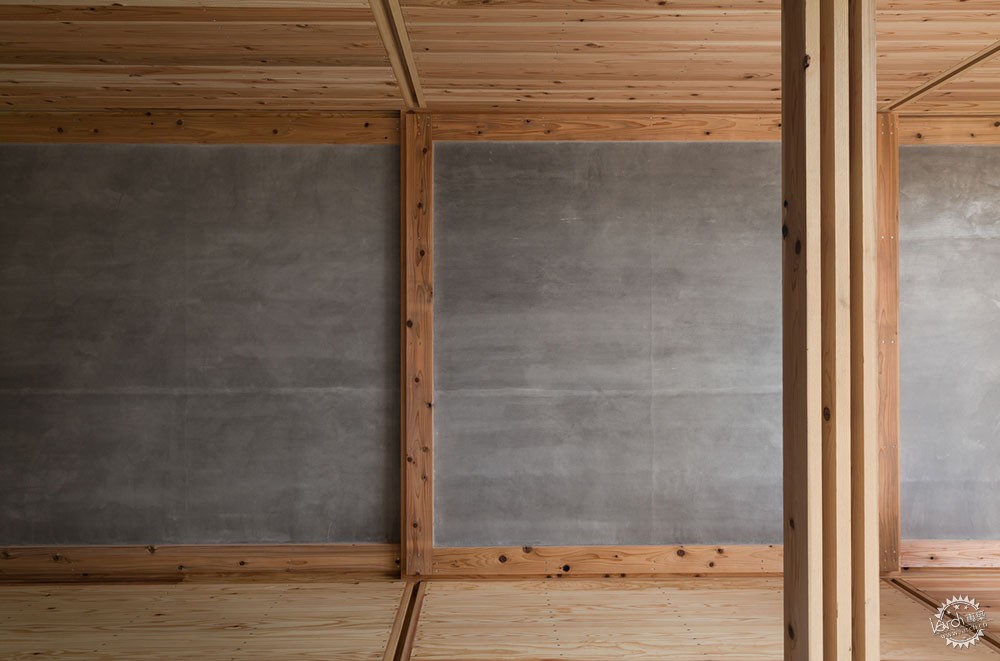
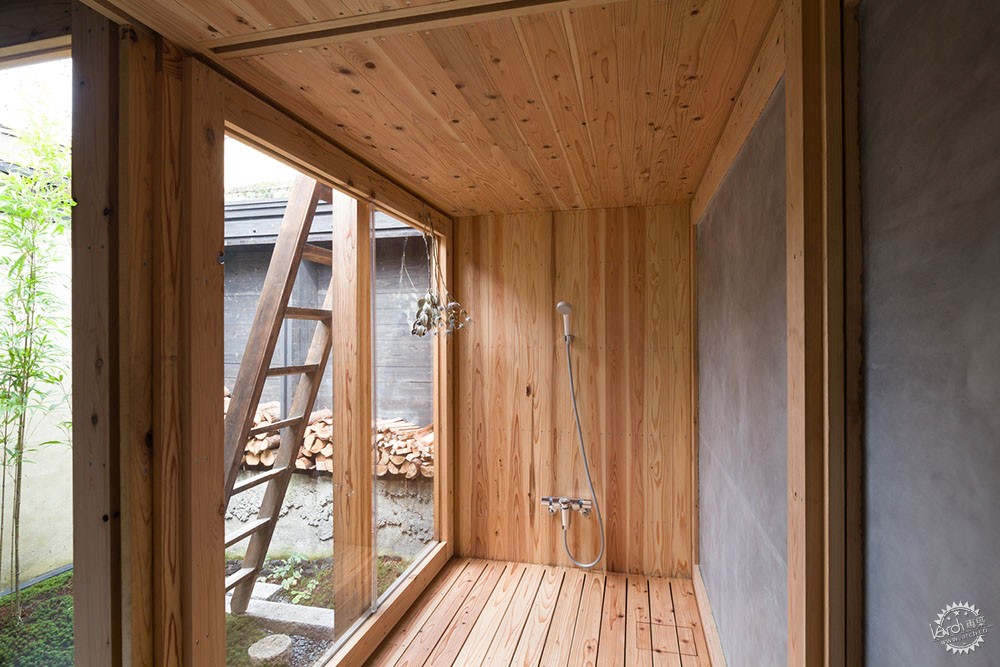
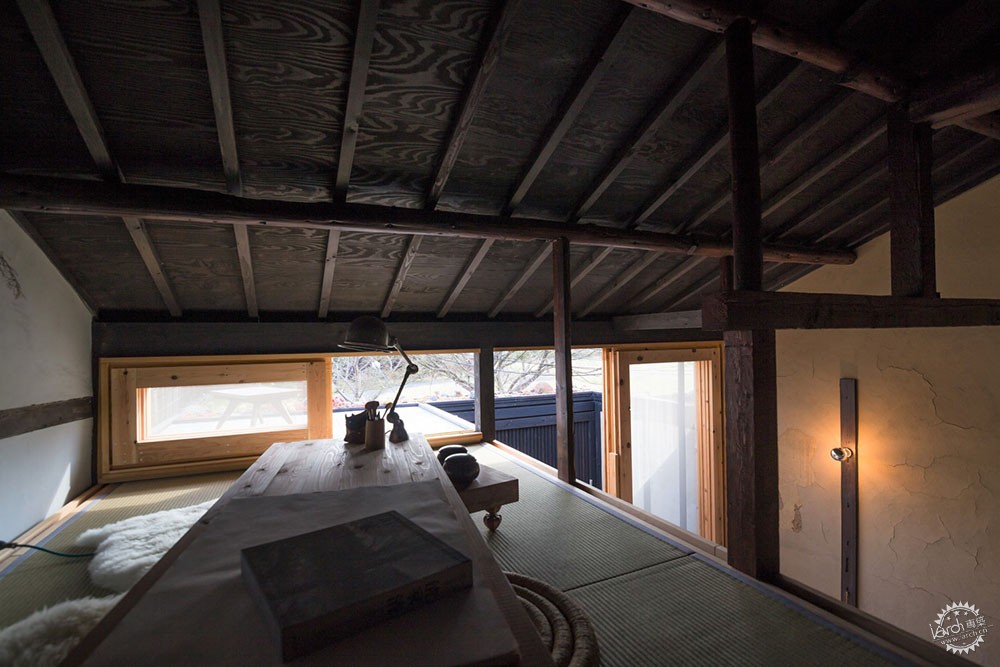
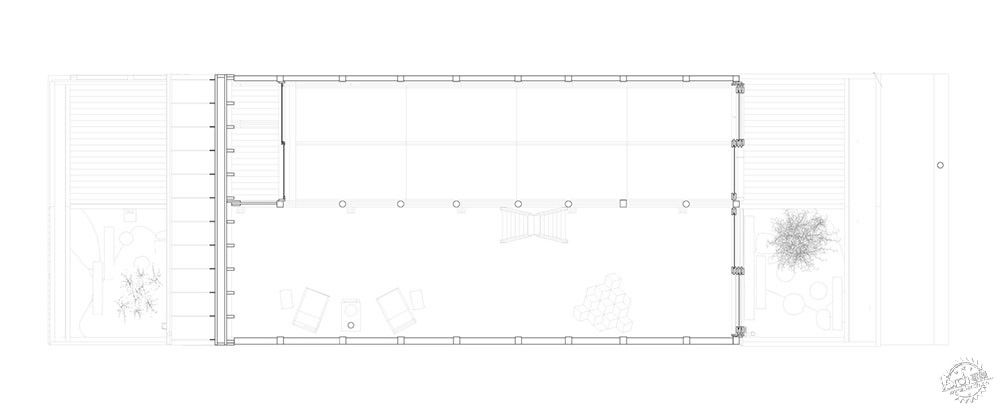
建筑设计:2M26
地点:日本 京都
类型:住宅/室内
面积:48平方米
项目时间:2020年
摄影:soukousha (Yuya Miki)
制造商:Toto, Acor, Kyono-zaimokuya, LIXIL , kohei yatsuda, mitsuru Yokoyama
主创建筑师:Mélanie Heresbach, Sébastien Renauld
客户:2M26
Houses, Houses Interiors • Kyoto, Japan
Architects: 2M26
Area: 48 m2
Year: 2020
Photographs: soukousha (Yuya Miki)
Manufacturers: Toto, Acor, Kyono-zaimokuya, LIXIL , kohei yatsuda, mitsuru Yokoyama
Architect In Charge: Mélanie Heresbach, Sébastien Renauld
Clients: 2M26
|
|
